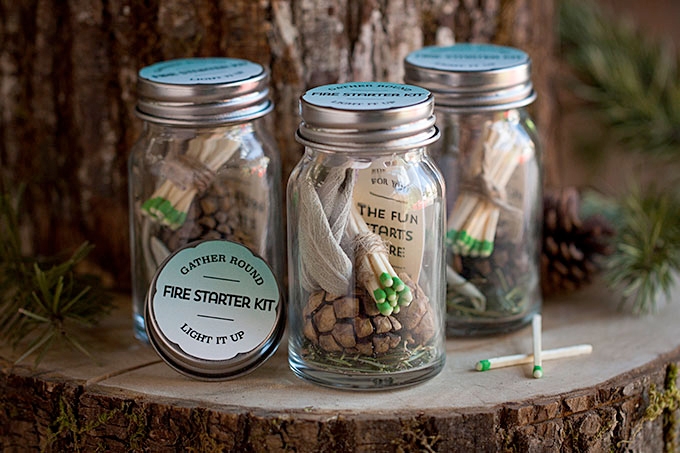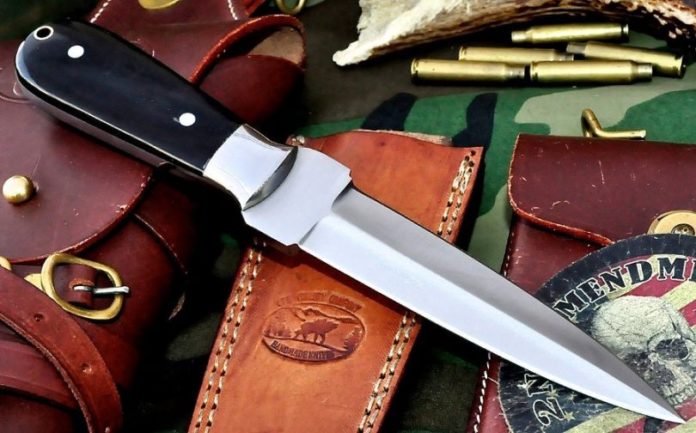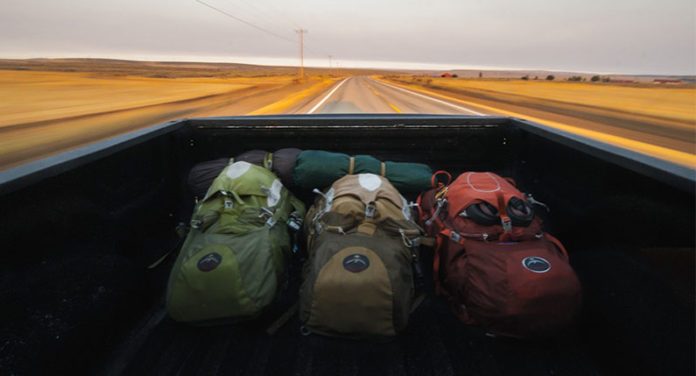One of the simplest preparations that you can make for any kind of disaster is to put together a bug out bag.
Also known as a go-to bag or a 3 day/72 hour survival kit, a bug out bag is simply the backpack of survival items that you grab to take with you should you ever need to evacuate your house, regardless of whether you’ll be going on foot or in your car.
The idea is that the items within your bug out bag will keep you alive for a three day/72 hour period. The reason why this duration is so crucial is that if you can make it past the first seventy-two hours of a major disaster, the chances of you surviving the rest of the disaster go up significantly.
It is not the bag itself that can guarantee your survival. It is the items in your bag that can assist you with surviving. So in this post, we are going to provide bug out bag checklist of items that would be beneficial in such an event.
Here is the ultimate bug out bag checklist, presented in alphabetical order:
Cards


A card deck is hardly a necessity, but it will still be something nice to have on hand to help pass the time. If you have ever experienced a blackout or been without power you know that downtime can drive you crazy. So being able to break out some entertainment during such an event can boost your morale. Make sure the cards are protected in a plastic case or at least in a Ziploc bag, or else they’re going to be ruined quite easily.
Cash
Cash can be used for bartering purposes or for buying food and water at a convenience store or gas station should you ever get the chance. Have at least $100 divided into $20, $10, $5, and $1 bills. Keep it in a waterproof container or bag.
Related: Simple Guide To Money
Clothing
Clothing can take up a lot of space and add bulk and weight to your bug out bag, so you should only add extra clothing that you truly need. At the very least, you should aim to have one extra pair of socks, a hat, and gloves. If you live in a winter environment, or anywhere where it gets cold, a jacket or cold would be preferable too. Ideally, you should have the essential winter survival clothing layers packed that include the base layer, middle layer, and outer layer.
Duct Tape
You are probably wondering why duct tape would be included on the bug out bag checklist. What can’t duct tape fix? Having at least one roll of duct tape in your bug out bag could definitely come handy for a number of reasons. You can use it to repair holes in your bug out bag, to help build shelter, or as an emergency bandage. There are many more uses of duct tape when it comes to survival. You just have to be crafty.
Related: 23 Prepping Items that You Can Find at the Dollar Store
Emergency Blanket or Sleeping Bivvy
An emergency blanket, such as a solar blanket, will be another valuable item to have for sleeping and staying warm because it reflects body heat back to you. An alternative would be a sleeping bivvy, which is essentially a compact sleeping bag when folded up so it requires less space.
Fire Starters


The ability to create fire is one of the most critically essential survival skills of all, and you need to have the tools that enable you to do it. At a minimum, you should have at least three fire starters in your bug out bag: a lighter, a box of 40 matches in a waterproof case, and a magnesium flint striker.
This way, you have backup fire starting methods should you lose any of the other methods. And in addition to fire starters, you also will want something that can help you get a fire going quickly, such as cotton balls or Q-tips and Vaseline.
First Aid Kit
If you ever see a bug out bag checklist without a first aid kit, something’s wrong. No bug out bag or survival kit of any kind is complete without a fully stocked first aid kit. Even the smallest of injuries, such as a light cut or a scrape, will have to be treated with the utmost attention because an infection will set in.
Here is a list of basic but essential first aid items to have:


- Alcohol Prep Pads
- Antibiotics
- Aspirin
- Bandages
- Gauze Pads
- Ibuprofen
- Medical Mirror
- Medical Scissors
- Medical Tape
- Medical Tweezers
- Prescription Medications
- Tourniquet
- Tylenol
- Flashlight
Have at least two flashlights in your bug out bag, with one set of spare batteries for each. One flashlight should be a larger duty flashlight such as a Maglite, which can also double as a club, while the other should be a smaller flashlight that you can easily carry around in your pocket.
Related: How to Build a First Aid Kit – Prepper Edition
Food
The best kind of food to have in your bug out bag will be portable and nutritious long-lasting food such as Granola bars, energy bars, and protein bars. Have at least a three days supply. If you are traveling a long distance on foot you are going to need as much energy as possible. It is hard to do much on an empty stomach. A delicious meal will also improve your morale in such an emergency.
Garbage Bag
It’s unfortunate that the garbage bag is so overlooked a survival item because it’s one of the most versatile and practical tools that you can have in a survival situation. You can use a garbage bag for storing items, as a shelter wall, as a mattress or pillow (stuff with leaves and grass), as a poncho (cut holes), or for signaling (if it’s orange or another bright color that stands out).
Knife (Fixed Blade)


Everyone understands the critical importance of having a knife in a survival situation. It’s without question one of the most versatile tools in existence, and its importance in a survival situation cannot be overstated. This is why no bug out bag checklist is truly complete without a knife.
A fixed blade knife with a sheath that you can keep strapped to your hip or leg is a must for your bug out bag. Specifically, you’ll want one with a full tang for durability, such as the proven and classic KA-BAR knife. You can use this knife for defense, for adding to a pole to make a knife spear, for splitting wood, shelter building, starting fires, and so on.
Knife (Folding)
In addition, to a fixed blade knife, you’ll also want to include a folding knife for more precise work. It can be used for smaller tasks like cutting rope or cans. This is a knife that you can keep clipped to the inside of your pocket. Your folding knife can also serve as a backup to your fixed blade knife as well.
Related: How To Choose The Best Tactical Knife
Handsaw (Folding)
A basic folding handsaw may not be necessary if you have a hatchet, because the only real purpose for a handsaw is to cut down trees or for breaking up a fallen tree into smaller chunks, and a hatchet can be used for the same purpose. Nonetheless, having a handsaw on hand as a secondary option may still be smart.
Hatchet
Many strong arguments can be made that a hatchet is more versatile and practical than a knife. There’s no question that it can be used for more heavy-duty tasks, as it will be far better suited for chopping down smaller sized trees, chopping firewood, striking against a rock to create fire, splitting ice, or more close-quarters defense.
Paracord
No bug out bag checklist is complete without having paracord or rope in it somewhere. Shelter building will just be so much easier with paracord, and you can also use it for things such as setting traps and snares or for rappelling down steep cliffs. Even the threads inside the paracord can be used for fishing. There are many survival uses of paracord which makes it essential to have.
Related: How Paracord Can Save Your Life
Personal Hygiene Kit
Personal hygiene and sanitation, in general, is easily the most overlooked topic when it comes to survival. You need to take care of yourself to stay healthy and avoid disease and infection.
You should have a separate personal hygiene kit inside of your bug out bag that includes each of the following items:
- ChapStick
- Deodorant (travel sized)
- Fingernail Clippers
- Hand Mirror
- Hand Sanitizer
- Soap Bar
- Shampoo (travel sized)
- Toilet Paper (don’t be conservative with this one)
- Toothbrush (compact)
- Toothpaste (travel sized)
Poncho
A poncho is a necessity because it helps to keep your clothes dry when it’s pouring rain outside. Plus, even if it isn’t, you can also use your poncho as a shelter wall or floor. If it’s brightly colored, you can also use your poncho as a signaling device. Avoid the cheap $1 ponchos as they rip and tear easily and are really designed for one-time use only; invest the $20 or so in getting a higher quality model.
Related: 13 Shelters That You Can Build With A Military Poncho
Shovel (Folding)
A shovel, even a compact folding model, is going to add a lot of weight to your bug out bag so you may not desire to carry it. But if you do, the best place to carry it will be to have it strapped to the outside of the pack. A shovel will be useful for digging shelters, trenches, or latrines, plus if it’s a model with a serrated edge on one of the blades it will also be hugely practical as a handsaw as well. That’s also not to mention its value as a self-defense weapon.
Tarp
Yes, it’s bulky and heavy, but there will seriously be no better shelter item to have on hand than a tarp. Simply tie some paracord between two trees, drape your tarp over it, and you have an effective A-frame shelter, for example. Plus, you can also use your tarp to collect rainwater, or it can be used to help create a solar still that will collect drinkable water (as you need plastic sheeting to create a solar still).
Water


Water is obviously a survival must. You literally can’t live without it for more than three days, and in just one day, you’re going to suffer from the extremely negative effects of dehydration (loss of energy, pounding migraines, etc.)
Since your bug out bag is meant to last you for a minimum of three days, you must have at least a three days supply of water. Have this water stored in a metal canister (you want it to be metal so you can use it for boiling water if necessary as well as for durability), and rotate it out at least once every six months.
Water Filter
You have to recognize the strong possibility that your three day supply of water like we discussed above will run out, forcing you to have to turn to find water on your own. This shouldn’t be too difficult, because there is an abundance of places to scavenge it from urban areas as well as plenty of natural sources, but you will need to make sure it’s safe to drink.
Boiling is one method to purify water to make it safe to drink and that’s why you’ll want a metal canister, but still, you’ll definitely want to have a personal water filter as well for a backup option. A high-quality personal water filter such as the LifeStraw will allow you to drink straight from a natural water source such as a stream or lake so long as it hasn’t been contaminated with chemicals.
Related: The Easiest And Cheapest Way To Filter Water With Shungite
Water Purification Tablets
Water filters are great for getting rid of visible sediment and substances, but it’s far less effective for purifying the water from bacteria and other things you don’t see. For this, you can do boiling, or you can also use iodine water purification tablets, which can purge water of bacteria and pathogens within thirty minutes.
Conclusion
You can add more items to your bag if you see fit, but the above bug out bag checklist is a good list to follow because with the above items almost all of your priorities and needs in a survival situation or bug out disaster scenario will be covered.
Keep in mind that no two bug out bags is the same. There will be certain items that are necessary for your region (such as sunglasses and sunscreen if you live in a desert, or snowshoes and winter clothing if you live in a winter environment), and there are other items that you personally will just want or need for yourself (whatever they may be).
But as long as you include the above items at a minimum, your bases will be covered, and that’s what truly matters.





















